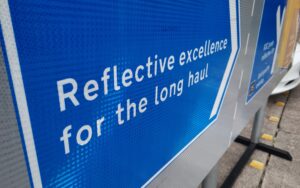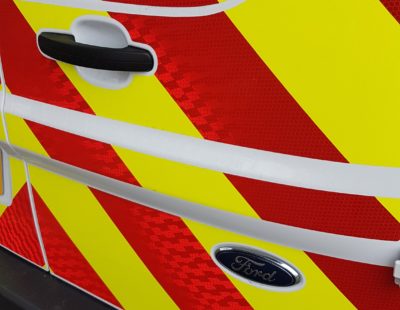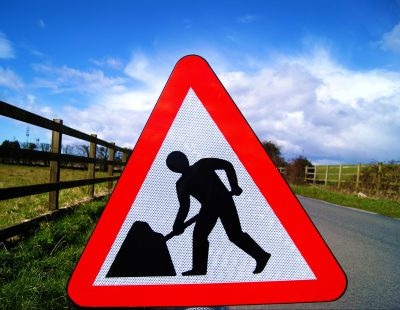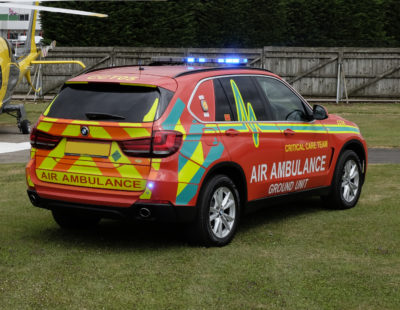Vehicle livery is utilised in a range of sectors – from the emergency services to construction fleets to any business with a company car! For some organisations, regulations stipulate the use of reflective materials where the lack thereof would impact road safety. For others, bold, eye-catching livery is simply another form of marketing.
Lakeside Group supplies reflective materials of exceptional quality to organisations across the UK. From contour tape to reflective vinyl, our vehicle livery products are durable, fully compliant, and well designed.
In this blog, we provide the ultimate overview of vehicle livery and highlight its various applications.
What is vehicle livery?
When we think of livery, we think of special, distinctive uniforms – and vehicle livery is exactly that. This term describes the distinctive colours and patterns used consistently on certain vehicles to make them more distinguishable, conspicuous, and recognisable on the roads. It is usually achieved using reflective vinyl to further enhance visibility.
For vehicles stopping on high-speed carriageways and motorways, these colours and patterns are set down in Chapter 8 of the Traffic Signs Manual. Similar to Chapter 8 guidance, but for lower speed roads (< 50mph), Safety at Street Works stipulates vehicle safety markings that must be present at street works in order for workers, pedestrians and other road users to remain safe.
Learn more about Chapter 8 compliant vehicle reflective >
Learn more about Safety at Street Works >
Commercial vehicles can also utilise vehicle livery. Here, there is a greater deal of design flexibility, though branded vinyls should never resemble that of emergency service vehicles as this could lead to confusion. Some private ambulances have been known to adopt the same yellow and green Battenburg markings as standard ambulances, but this is not strictly allowed.
Vehicle livery applications
Vehicle livery is used by vehicles in all sectors, but it is perhaps most closely associated with emergency and highway maintenance vehicles. As a general rule of thumb, any vehicle that will be stopping on high or low speed roads should have reflective vinyl as set out in Chapter 8. This includes cars, vans, gritters, and recovery vehicles. HGVs are also required to use reflective markings to ensure their full size can be distinguished even at night.
But it’s not just about regulations. Some commercial enterprises choose to adopt vehicle livery as a form of low-investment marketing. With a single financial outlay, a brand can use highly attractive and memorable vehicle markings to enhance their identity and get their brand in front of the eyes of their target customers. Think of it as advertising on the go.
Discover our digitally printed reflective products >
Vehicle livery for emergency vehicles
For emergency vehicles, standing out amongst regular traffic is quite literally vital. If the people in these vehicles aren’t able to carry out their duties in a timely manner, people’s lives are at risk. More than that, if they can’t be distinguished clearly, they may not be able to get to the location of the emergency quickly and safely. By adopting a uniform pattern and colour scheme across each emergency service, pedestrians and road users will immediately be able to identify the vehicle and understand its purpose. As a result, they can respond appropriately.
A Buyer’s Guide to Emergency Service Vehicle Markings >
Vehicle livery for road & street works
Vehicles that stop on public highways also need to be highly conspicuous. Their presence on the roads could become a hazard if they are not seen clearly or early enough. In Chapter 8, the Department of Transport advises that all vehicles stopping on a highway or motorway should be made visible with rear chevron markings. The exact specifications required depends on the size of the vehicle, and whether the road is high or low speed. For high speed roads, the reflective material used should be Class R3B, whereas for low speed roads (less than 40 mph), the material should be Class R2.
A Beginner’s Guide to Reflective Chevron Products >
Vehicle livery for heavy goods vehicles
Heavy goods vehicles are significantly larger than other traffic, so it’s important their full size is discernible even at night. For that reason, HGVs are required to have vehicle safety markings if they are over 7.5, and so do any trailers over 3.5 tonnes. These markings should outline the rear and sides of the vehicle so other drivers can clearly make it out.
Vehicle livery for commercial vehicle branding
Companies who operate vehicle fleets can utilise livery as a cost effective form of advertising. Company vehicles are underutilised marketing real estate, but digitally printed reflective products can allow you to advertise continually when on the move after only a single upfront investment. There are a range of colour and design options, and the livery can even incorporate contact details so any interested fellow drivers can get in touch. Whilst carrying out day to day duties, you could be generating new leads!
Should You Be Branding Your Commercial Vehicles? >
High quality reflective vinyl for vehicle livery
At Lakeside, we offer a range of high quality glass bead, micro prismatic and fluorescent vehicle livery products that conform to all the required regulations. We also supply companies across the UK with premium digitally printed reflectives to personalise vehicle fleets and enhance brand identity. Whether you’re looking for Chapter 8 compliant products, emergency service vehicle markings, or a new look for your company car, we can provide the quality products you need.
Get in touch to find out more about our range.
See more: A Buyer’s Guide to Reflective Material for Vehicles
See more: Understanding Ambulance Reflective Markings and Tape




